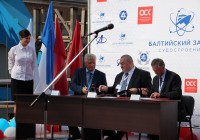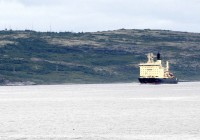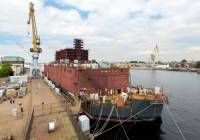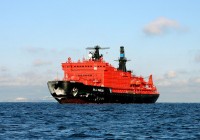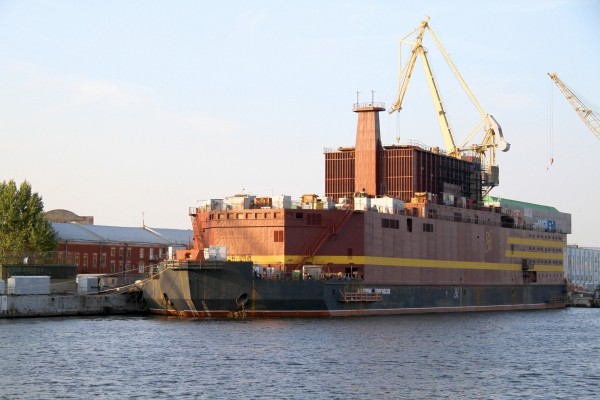
Ships shuttle to Pevek with materials for floating nuclear power project
ADVERTISEMENT
Pevek, the Russian east Arctic town located near the Bering Strait, will be the first settlement in the world powered by a floating nuclear power plant. Hectic deliveries of goods now take place as the winter season is rapidly approaching.
The first convoy loaded with construction materials arrived in Pevek on 16th September. Another vessel, the «Vyacheslav Anisimov», arrived with additional 3,000 tons of goods a week later. More vessels are planned to arrive on site on 3rd October and in the period 20-25th October, Russia’s state nuclear power company Rosenergoatom informs.
Up to 15,000 tons of construction materials are believed to be landed on site in the course of the operations.
By November, ice conditions in the area could significantly complicate additional shipments. Rosenergoatom and general contractor company Trest Zapsibgidrostroy intend to get the supplies they need on site for construction all through the winter period.
The floating installation named ”Akademik Lomonosov” is currently under construction at the Baltic Yard in St. Petersburg. Dock trials started in July this year and will continue until fall 2017. By the end of 2017, the plant is to be ready for transportation to Pevek, Rosenergoatom informs.
Power production on site is due to start before the end of 2019.
The ”Akademik Lomonosov” will be Russia’s first floating NPP. It will have a production capacity of 70 MW of electric power and 300 MW of heating power, enough to power a city with 200,000 people.
ADVERTISEMENT
In Pevek, however, there are only about 4700 people.
Russian authorities believe that the floating installation ultimately could replace the Bilibino NPP, the nuclear power plant located in Russia’s far east and planned gradually taken out of service.
ADVERTISEMENT
The Barents Observer Newsletter
After confirming you're a real person, you can write your email below and we include you to the subscription list.




